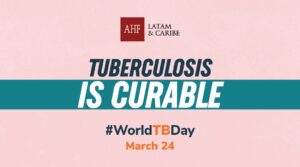A recent study revealed that two compounds in human semen, called spermine and spermidine, are able to restrict the transmission of a specific type of HIV, in a finding that may shed light on a new way to prevent the spread of the virus.
The discovery was made by a chemistry and biology team based at the Institute for Molecular Virology at the Ulm University Medical Center, Germany, in collaboration with another laboratory in Belgium, and published in the journal Science Advances.
The virus and its receptors
HIV-1, the most common type of virus that causes AIDS, has been the subject of intensive research for decades. At the same time, semen has been identified as the main vector of sexual transmission of HIV-1, due to its high concentration of the virus when the person is not under antiretroviral treatment.
Within the composition of the semen, there are different subtypes of the virus, including the variants of HIV type 1 (or HIV-1) known as X4 and R5. It has been observed that the X4 variant is found in fewer numbers in untreated people and also rarely leads to systemic infection, while the R5 does cause widespread infection after sexual transmission.
To identify factors that could limit sexual transmission of HIV-1 X4, the team led by Dr. Mirja Harms generated a library of compounds derived from seminal fluid and screened it for elements with antiviral action.
They were able to identify four adjacent fractions that blocked HIV-1 X4 but not HIV-1 R5, and found that they all contained spermine and spermidine, two polyamine-like substances that are abundant in semen.
Bonding question
The research team was able to show that spermine selectively binds to the CXCR4 co-receptor, a component found on the surface of cells that are targeted by HIV (target cells) and used by the X4 variants of the virus to enter them. . By binding to this receptor, spermine occupies that site and thereby blocks the possibility of HIV-1 X4 infection.
An unknown mechanism, until now
As the researchers explain in their article, studies on the viral composition of semen and recipient tissue in the early moments after transmission are very rare, and early moments of infection “are extremely difficult to analyze.”
Even so, it had been glimpsed that there was a control mechanism that prevented the transmission of HIV-1 X4 from men with the virus to their sexual partners. “Our findings suggest that seminal spermine restricts the sexual transmission of HIV-1 X4,” the authors note.
These findings could have important implications for understanding HIV transmission and for developing more effective prevention and treatment strategies. This advance opens new avenues of research for the development of more effective targeted therapies and preventive approaches. They would also explain why X4 variants are less prevalent in untreated people and why they rarely lead to systemic infection.
Something you can do is use a condom
Four decades after its discovery, HIV continues to raise intriguing questions for the scientific community. While the answers are unraveled, an affordable, safe, and easy-to-use method of prevention is the condom.
At AHF Latin America and the Caribbean we have free condoms for you, as well as free HIV tests so that you know your serological status. Locate our offices closest to you and make your appointment as soon as possible.







